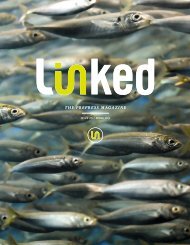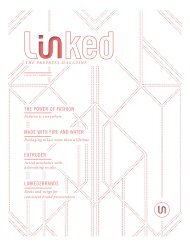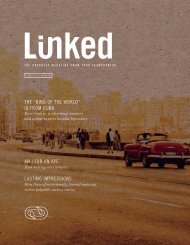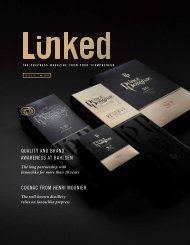Janoschka magazine Linked_V6_2021
Create successful ePaper yourself
Turn your PDF publications into a flip-book with our unique Google optimized e-Paper software.
12 i n s i g h t s
issue #6 © l i n k e d 13
It all begins with fire
Before the actual beating begins, about one kilogram
of gold is melted at over 1,100°C. At this
stage, other metals like silver, copper or platinum
can be added to create gold colour variations. The
liquid metal is cast into a small bar that is two to five
millimetres thick (approximately 2–5 mm).
Once it has cooled down, the goldbeater passes
this bar through rollers. This process is repeated
numerous times until a ribbon that is approximately
100 m long emerges. The goldbeater sets the rollers
closer together each time he feeds the gold
through. This makes the metal continuously thinner
and shinier. Interestingly, this process, which is
known as “strain hardening“, makes the soft metal
up to 20 per cent stronger. Once the gold finally
reaches the thickness of newspaper (approximately
0.06 — 0.07 mm), the goldbeater cuts it into small
squares. He then stacks them, separating each layer
with a piece of special paper (Montgolfier paper)
to form a package made up of approximately 600 to
700 sheets, which is called a cutch. Finally, he binds
the package with strips of goatskin.
Gold is a chemical element with the symbol Au (aurum in Latin).
Gold is the 79 th element in the Periodic Table.
It is the only metal that does not corrode.
Gold has a density of 19.3 g/cm³.
This means it is considerably heavier than the proverbially “heavy” lead (11.3 g/cm³).
It is malleable and strong. Normally, gold is hardened
by being alloyed with other metals.
Beating strengthens it while retaining its purity.
Au 79
Latin: aurum
melting point: 1,064.18°C
boiling point: 2,970°C









